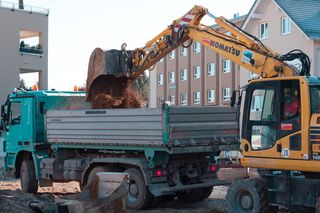Frequently Asked Questions
Contents
- Delivery and Postage
- Process and Kit
- Questions about Contamination
- Soil Fertility

Why should I look into contamination of my garden or allotment?
Modern developers spend thousands of pounds per home and garden to make sure that they are safe. Scientifically derived numbers to demonstrate that the level of contamination is acceptable or not have been adopted by local authorities and government agencies to determine ‘safe’ levels of contamination within gardens and allotments.
Whilst older properties and allotments may have been developed before the introduction of these tests, this does not mean they do not pose a risk.
Why is garden/allotment contamination not a more widely discussed issue?
Essentially the subject is uncontrolled outside of planning in new build developments or in specific instances of pollution occurring. As older properties do not need planning permission to be bought or sold there is no legislation to capture the risk older properties may pose.
On this basis it is down to concerned owners to undertake their own assessment. Until Soil Check was launched, providing the ability to self-test at a low cost, such testing via a consultant or lab would have cost hundreds of pounds, if not thousands. This high cost has been preventing people testing and it is therefore not a widely discussed and understood issue.
Does the level of contamination mean I am at a high risk?
There are a lot of variables to consider in this. Whilst the numbers set may have been exceeded and show a higher risk, the actual risk is proportional to the level of the exceedance, the amount you use the garden, are vegetables grown and consumed from the soil, are there children using the garden playing in the soil.
Detailed risk assessments can be undertaken, tailored to the individual circumstances, but these may be expensive. The 'Generic Assessment Criteria' are "Generic" as they are a first level of assessment based on a possible average worst case...
On this basis, the generic numbers are conservative, but they are a good indicator.
What can I do about the contamination shown in the sample I took?
There are a number of options shown on our website (see here) which may help. Modern housing developers generally have the following options:
- Dig out the contaminated soil and replace it with clean soil – in some instances using a 'geo fabric' separation layer may also be beneficial to stop the clean soil mixing with the old.
- Soil Check would suggest a reputable source for purchasing new topsoil such as Rolawn who provide UK wide delivery - https://www.rolawn.co.uk/topsoil.
- Cover the area with hard standing such as a patio or drive.
- There are chemical and physical means of improvement but these are more technical and unlikely to be appropriate.
Whilst not likely appropriate for housing developers, home owners may be able to implement the following:
- Construct a raised bed over the affected area with a 'geo fabric' separation layer at the base to stop the contaminated soil mixing with the newly imported clean soil.
Is this really something I should worry about?
Modern housing developers spend hundreds or thousands of pounds for every house, making sure the garden is safe, they do this for a reason and this is that contaminated soil can pose a risk. The level of risk depends on how much you use your garden and/ or how frequently you eat vegetables from your garden or allotment. The more you use these areas and the more you eat from them, the higher risk contaminated soil may pose to you. Soil Check adopts the same acceptance values that the developers do to check the soil sent. See Why Soil Check for more information on bio-accumulation and other risks.
What is the difference between the garden and allotment (generic assessment criteria) numbers?
The risk assessment calculations are based on a number of factors, this includes how much fruit and vegetables may be eaten from both. Also, how much time is spent at the location and the age of the people using the area?
On this basis, the amount of vegetables consumed from an allotment may be considered to be higher (after all why would you have an allotment if not to grow and eat vegetables) and therefore the allowable level for certain contaminants may be lower.
Conversely, the home garden with children playing poses a different kind of risk as children are more susceptible. Such variables in the scientific model control the outcome of the 'generic assessment criteria' derived.
Similar numbers exist for parks and industrial areas (which are progressively less conservative).
Who can I complain to about the contamination in my garden?
There is no real recourse for contamination in gardens unless your property is new and the developers warranty is still held. The self-test kit may not be suitable to prove this and you may need third party assistance. If your property or allotment is out of building warranty you may be able to take this up with your local authority, particularly if you are renting allotment space from them.